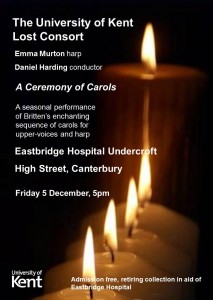You can tell that we have performances looming; our rehearsals are coming thick and fast, none more so than Saturday’s all-day session. These lengthier rehearsals are infinitely more useful than our customary two-and-a-half-hour weekly meetings, as they allow for more concentrated, more sustained working. You have time to develop the whole process – looking at notes through balancing chords, to shaping, dynamics, placing consonants, making sure vowel shapes are correct, unity of ensemble sound, time really to get beneath the skin of the music far more in longer rehearsal sessions; and over more pieces, too.
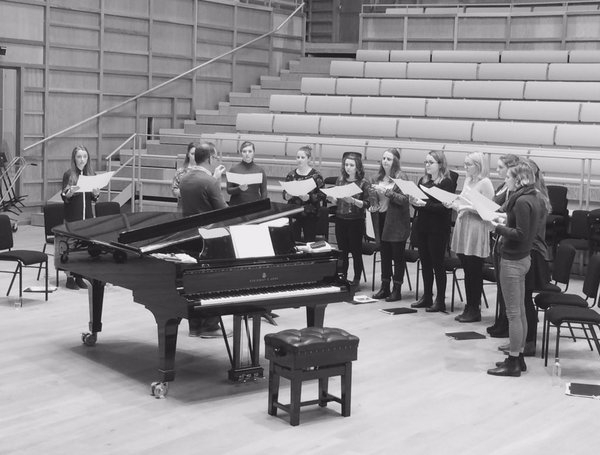 Saturday therefore allowed us to immerse ourselves in the repertoire for our looming performances, and showed us aspects of the programme that hadn’t been apparent before. A long look at Tartini’s Stabat Mater, for instance, ended with the Choir singing the whole piece through for the first time, and we discovered the piece has an emotional scale and drama far outweighing the scope of its slight appearance on the page. Moving between radiant, three-voice colours and the stark simplicity of plainsong in its setting of the agonising text reflecting on Christ’s Mother weeping at the foot of the Cross, and a yearning to share in Christ’s passion, the music demands sustained concentration in order to bring out the tone of the text as it unfolds.
Saturday therefore allowed us to immerse ourselves in the repertoire for our looming performances, and showed us aspects of the programme that hadn’t been apparent before. A long look at Tartini’s Stabat Mater, for instance, ended with the Choir singing the whole piece through for the first time, and we discovered the piece has an emotional scale and drama far outweighing the scope of its slight appearance on the page. Moving between radiant, three-voice colours and the stark simplicity of plainsong in its setting of the agonising text reflecting on Christ’s Mother weeping at the foot of the Cross, and a yearning to share in Christ’s passion, the music demands sustained concentration in order to bring out the tone of the text as it unfolds.
We also pieced together, for the first time in its entirety, Veljo Tormis’ Spring Sketches, a beautiful set of short songs evoking various nature-scenes – the ebb and flow of the sea, apple-blossom, the colours of the evening sky, the warmth of late spring and the echoing cuckoo-call. There are some ravishing chords at various places in the suite, which need careful balancing if the colours are to come forth. Assistant conductor, third-year Joe Prescott, also took the Choir through pieces by Mozart, Brahms and Cornysh’s Ah, Robin.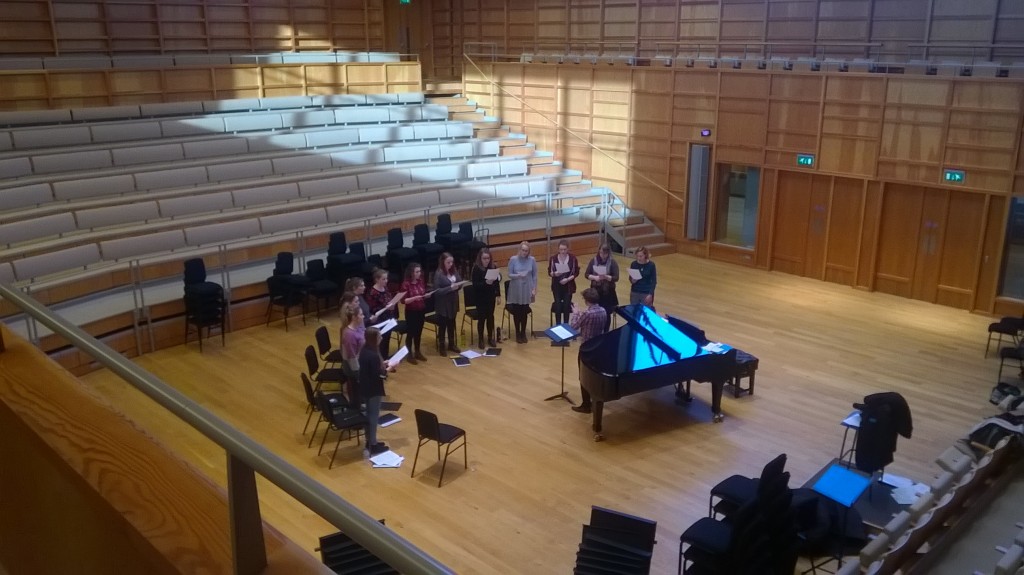
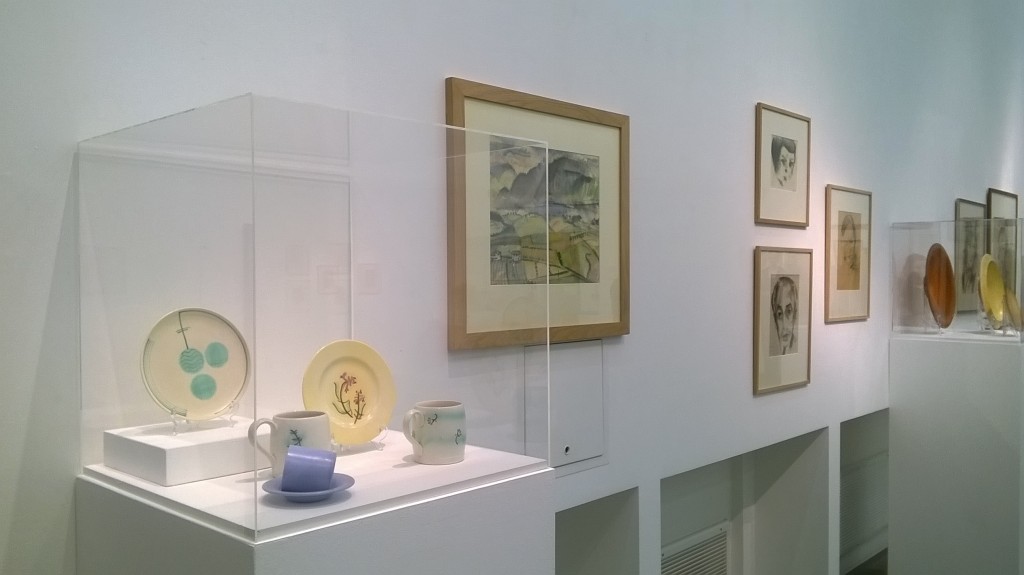 Mid-way through the afternoon, we decamped to Studio 3 Gallery, the venue for our first concert on Friday 12 February, in which the Choir will perform amidst the backdrop to the gallery’s new exhibition, After the Break, which exams the work of two artists, Grete Marks and Kurt Schwitters, who both fled Nazi Germany and came to settle in England. There’s something highly atmospheric about performing amidst visual art – the rapport between the two media means you experience the music differently in the context of the artwork, and your response to the artwork is different in the context of music.
Mid-way through the afternoon, we decamped to Studio 3 Gallery, the venue for our first concert on Friday 12 February, in which the Choir will perform amidst the backdrop to the gallery’s new exhibition, After the Break, which exams the work of two artists, Grete Marks and Kurt Schwitters, who both fled Nazi Germany and came to settle in England. There’s something highly atmospheric about performing amidst visual art – the rapport between the two media means you experience the music differently in the context of the artwork, and your response to the artwork is different in the context of music.
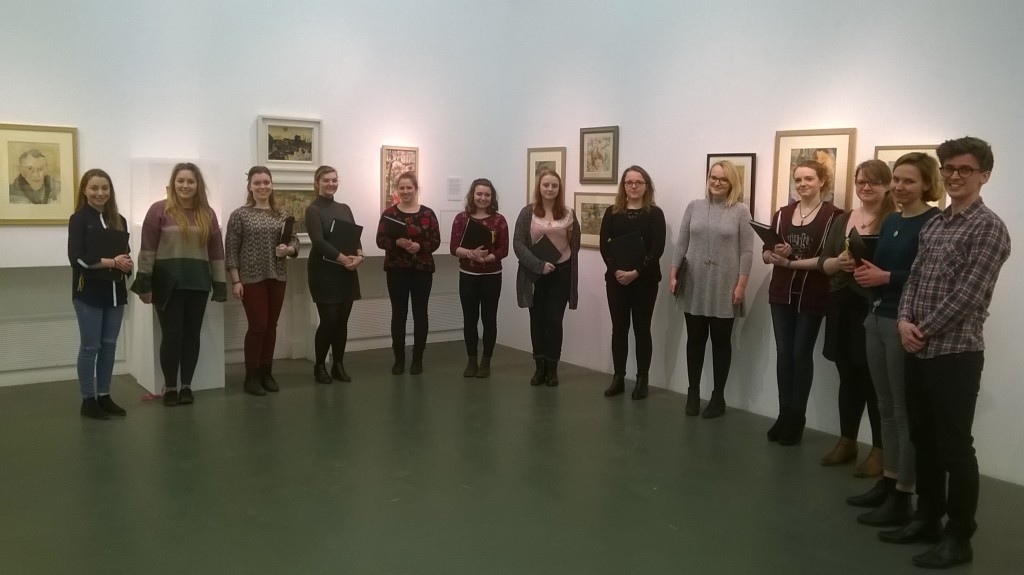
The Choir rehearsing in Studio 3 Gallery
We arranged ourselves in the corner of the gallery, and started to sing what will be the first piece in the programme, a Kyrie by Hildegard von Bingen. We reached the end of the first phrase – and stopped. The rich acoustic of the gallery had blossomed as that first phrase unravelled, lifting and filling the space, and there was a sense immediately that time had turned, travelling back over a thousand years.
 It was a remarkable moment.
It was a remarkable moment.
You could see on the faces of the singers that something had just occurred, something unexpected, something quire powerful. There was a pause, and then an excited buzz went around the room; this gig is Going To Work!
We spent the remainder of the afternoon running through the entire programme, from that skirling Kyrie and ending with the dancing Song of the Stars by Bob Chilcott. Clothed in the sonorous acoustic of Studio 3, the ensemble had a much more vivid, unified sound; and in fact we discovered that we need to tailor the louder sections somewhat, in order not to overwhelm the listener! But we can also go very much quieter in the softer passages, really draw the audience to us and make them listen.
 All in all, then, a good day’s work. And first-year Alice S’s cake-making skills were in evidence yet again – there was some pressure to live up to the excellence of her contribution to lunch after the success of her effort last term, and it seems she didn’t disappoint this time around either. We pick up again tomorrow night, in a steady build-up into both concerts this month, and at last the pieces are starting to bloom. Come and here them for yourselves…
All in all, then, a good day’s work. And first-year Alice S’s cake-making skills were in evidence yet again – there was some pressure to live up to the excellence of her contribution to lunch after the success of her effort last term, and it seems she didn’t disappoint this time around either. We pick up again tomorrow night, in a steady build-up into both concerts this month, and at last the pieces are starting to bloom. Come and here them for yourselves…

 The performance on Thursday 10 November at 1.10pm in Studio 3 Gallery, which will be prefaced by a performance of The Last Post, is free, and is one of three events taking place across two days as we commemorate the anniversary of the Battle of the Somme; more details here.
The performance on Thursday 10 November at 1.10pm in Studio 3 Gallery, which will be prefaced by a performance of The Last Post, is free, and is one of three events taking place across two days as we commemorate the anniversary of the Battle of the Somme; more details here.

 Starting with a new choir is always a nerve-wracking experience for a conductor: establishing protocols early on, showing the Choir how they will be expected to learn in rehearsals, working to bring the group together as a unit – all with people whom you don’t necessarily know, or who don’t know one another. You want to make sure that they feel they are achieving quickly, in order that they feel motivated – especially when you want them all to come back the second week!
Starting with a new choir is always a nerve-wracking experience for a conductor: establishing protocols early on, showing the Choir how they will be expected to learn in rehearsals, working to bring the group together as a unit – all with people whom you don’t necessarily know, or who don’t know one another. You want to make sure that they feel they are achieving quickly, in order that they feel motivated – especially when you want them all to come back the second week!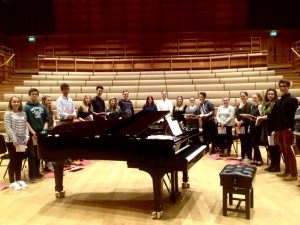 It’s early days, of course, and we are still finding our feet, experimenting with different formations to find a suitable balance, and gradually working on singing more confidently to bring out the Choir’s particular sound; but it’s an exciting time, being a part of the start of the gradual unfolding of the group into what potentially will be a very exciting ensemble.
It’s early days, of course, and we are still finding our feet, experimenting with different formations to find a suitable balance, and gradually working on singing more confidently to bring out the Choir’s particular sound; but it’s an exciting time, being a part of the start of the gradual unfolding of the group into what potentially will be a very exciting ensemble.
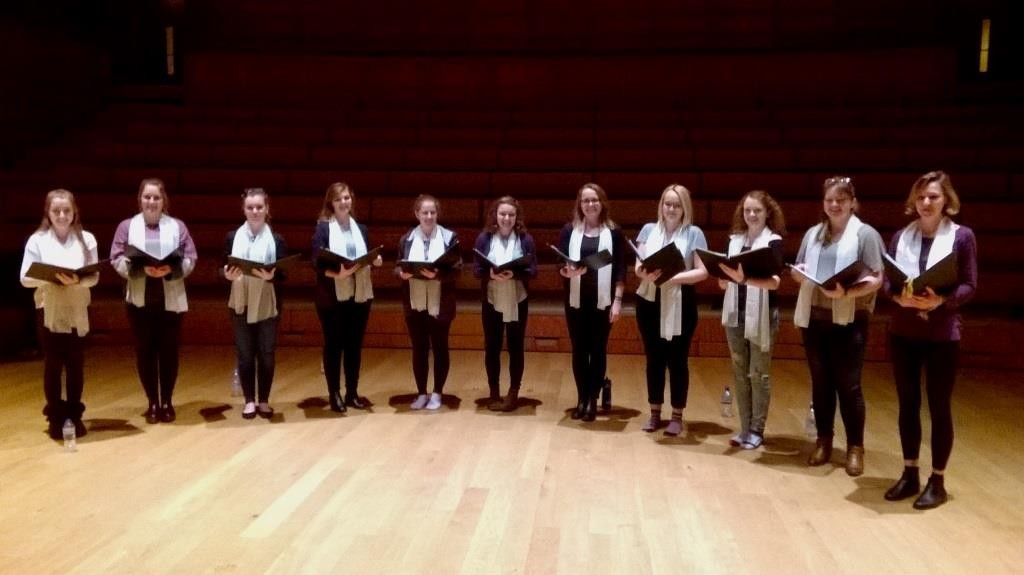 Having spent the first half of the rehearsal working on Vivaldi’s Gloria for the Crypt concert in two weeks, the tone of the rehearsal rose in the second half with our practice run-through. What it taught us was that the level of sustained concentration is very demanding, even in a mock situation. And working through the pieces in order allowed us, afterwards, to reflect on the pacing of the programme as a whole, and how we might improve it. Assistant conductor Joe moved the pace of Holst’s O Swallow, Swallow on slightly, and produced a much freer interpretation; the same also for Tartini’s setting of the Stabat Mater, which needs to avoid luxurious wallowing if the piece isn’t to feel too unwieldy. Of course, you always pace a performance according to the nature of the acoustic in which you are singing, and Studio 3 Gallery has a rich, resonant acoustic that could lure us into really dwelling on chords and the ends of phrases, so we will have to be alert to any tendancy to dawdle!
Having spent the first half of the rehearsal working on Vivaldi’s Gloria for the Crypt concert in two weeks, the tone of the rehearsal rose in the second half with our practice run-through. What it taught us was that the level of sustained concentration is very demanding, even in a mock situation. And working through the pieces in order allowed us, afterwards, to reflect on the pacing of the programme as a whole, and how we might improve it. Assistant conductor Joe moved the pace of Holst’s O Swallow, Swallow on slightly, and produced a much freer interpretation; the same also for Tartini’s setting of the Stabat Mater, which needs to avoid luxurious wallowing if the piece isn’t to feel too unwieldy. Of course, you always pace a performance according to the nature of the acoustic in which you are singing, and Studio 3 Gallery has a rich, resonant acoustic that could lure us into really dwelling on chords and the ends of phrases, so we will have to be alert to any tendancy to dawdle! So, the next time Minerva Voices meets, it’ll be in the gallery, warming up for the performance on Friday lunchtime (
So, the next time Minerva Voices meets, it’ll be in the gallery, warming up for the performance on Friday lunchtime ( Saturday therefore allowed us to immerse ourselves in the repertoire for our looming performances, and showed us aspects of the programme that hadn’t been apparent before. A long look at Tartini’s Stabat Mater, for instance, ended with the Choir singing the whole piece through for the first time, and we discovered the piece has an emotional scale and drama far outweighing the scope of its slight appearance on the page. Moving between radiant, three-voice colours and the stark simplicity of plainsong in its setting of the agonising text reflecting on Christ’s Mother weeping at the foot of the Cross, and a yearning to share in Christ’s passion, the music demands sustained concentration in order to bring out the tone of the text as it unfolds.
Saturday therefore allowed us to immerse ourselves in the repertoire for our looming performances, and showed us aspects of the programme that hadn’t been apparent before. A long look at Tartini’s Stabat Mater, for instance, ended with the Choir singing the whole piece through for the first time, and we discovered the piece has an emotional scale and drama far outweighing the scope of its slight appearance on the page. Moving between radiant, three-voice colours and the stark simplicity of plainsong in its setting of the agonising text reflecting on Christ’s Mother weeping at the foot of the Cross, and a yearning to share in Christ’s passion, the music demands sustained concentration in order to bring out the tone of the text as it unfolds.
 Mid-way through the afternoon, we decamped to Studio 3 Gallery, the venue for our first concert on
Mid-way through the afternoon, we decamped to Studio 3 Gallery, the venue for our first concert on 
 It was a remarkable moment.
It was a remarkable moment. All in all, then, a good day’s work. And first-year Alice S’s cake-making skills were in evidence yet again – there was some pressure to live up to the excellence of her contribution to lunch after the success of her effort last term, and it seems she didn’t disappoint this time around either. We pick up again tomorrow night, in a steady build-up into both concerts this month, and at last the pieces are starting to bloom. Come and here them for yourselves…
All in all, then, a good day’s work. And first-year Alice S’s cake-making skills were in evidence yet again – there was some pressure to live up to the excellence of her contribution to lunch after the success of her effort last term, and it seems she didn’t disappoint this time around either. We pick up again tomorrow night, in a steady build-up into both concerts this month, and at last the pieces are starting to bloom. Come and here them for yourselves…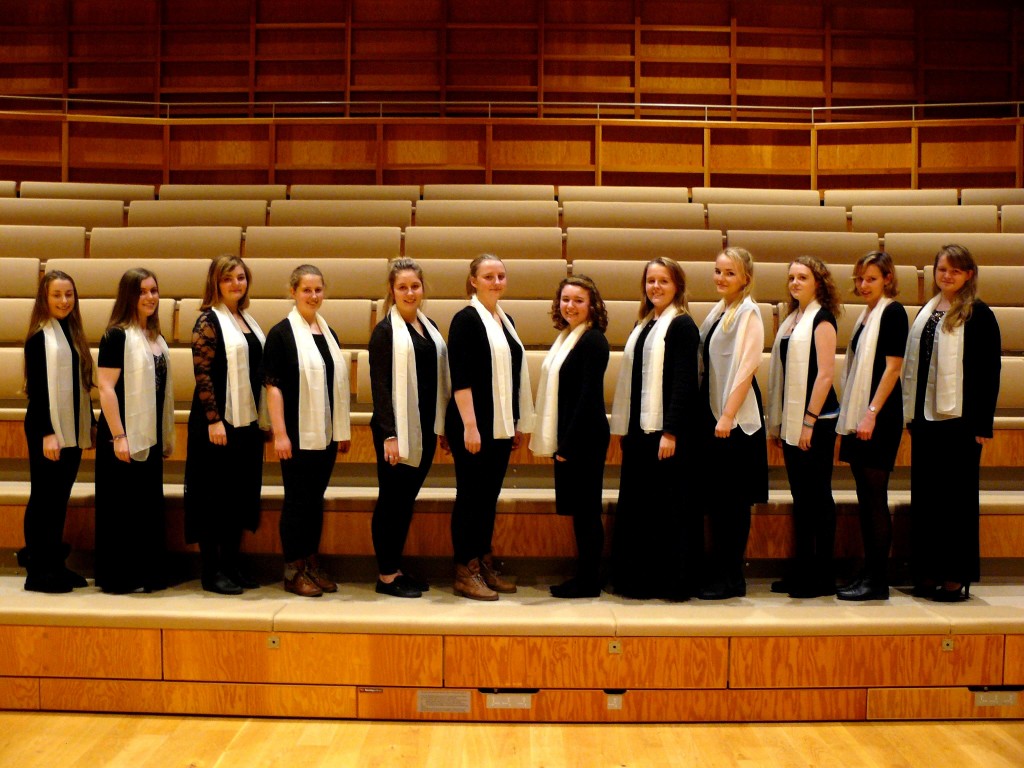 And all the weeks of nagging – by both myself and this year’s assistant conductor, Joe – finally began to yield results last night. The ensemble sound was more confident, the choir was beginning to find its feet and start to perform, rather than simply singing through the repertoire.
And all the weeks of nagging – by both myself and this year’s assistant conductor, Joe – finally began to yield results last night. The ensemble sound was more confident, the choir was beginning to find its feet and start to perform, rather than simply singing through the repertoire.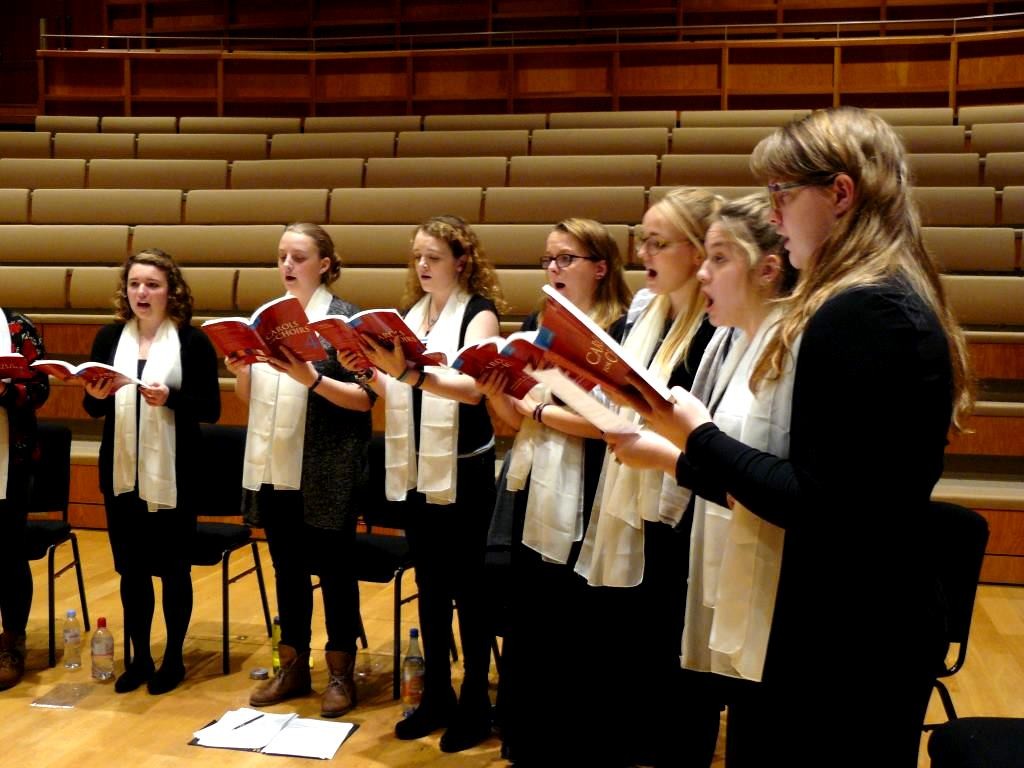 The other aspect to last night’s rehearsal was a first try-out of the choir’s concert outfits, to see if the colour and co-ordinating will work. This year, we’ve gone for the simple but stark contrast of black and cream, and last night we sang for most of the session in concert-dress; and it does make a difference. Not only do you need to sound like a choir, you need to feel like one; to stand and deliver in a manner that tells the audience that you know what you are doing, and that wins the listener’s trust even before you have sung a note. Standing like a choir last night also helped them sing like one too.
The other aspect to last night’s rehearsal was a first try-out of the choir’s concert outfits, to see if the colour and co-ordinating will work. This year, we’ve gone for the simple but stark contrast of black and cream, and last night we sang for most of the session in concert-dress; and it does make a difference. Not only do you need to sound like a choir, you need to feel like one; to stand and deliver in a manner that tells the audience that you know what you are doing, and that wins the listener’s trust even before you have sung a note. Standing like a choir last night also helped them sing like one too.
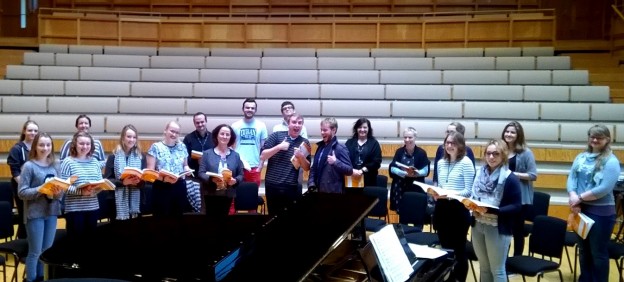
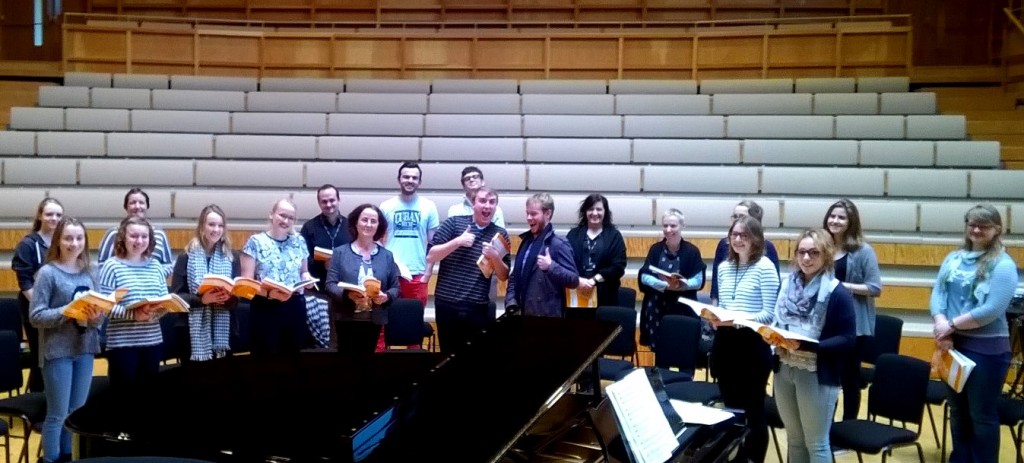
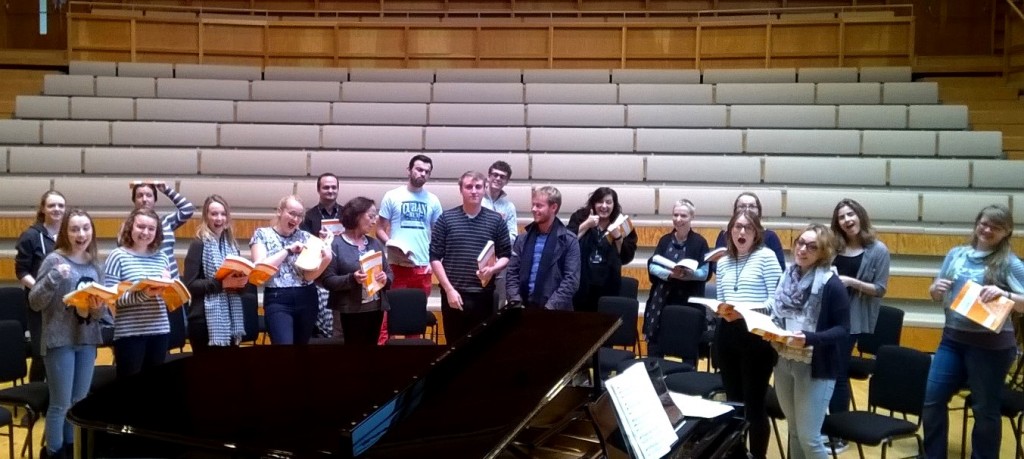
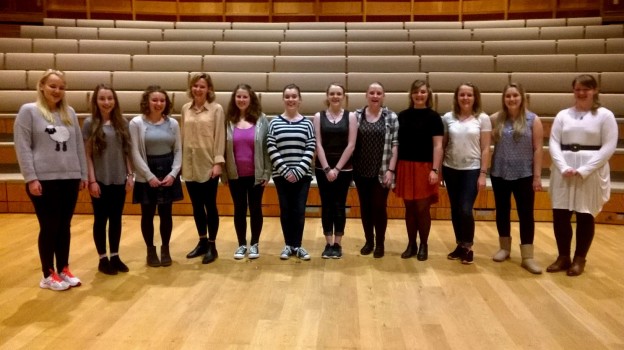
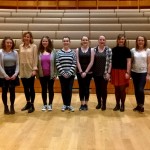



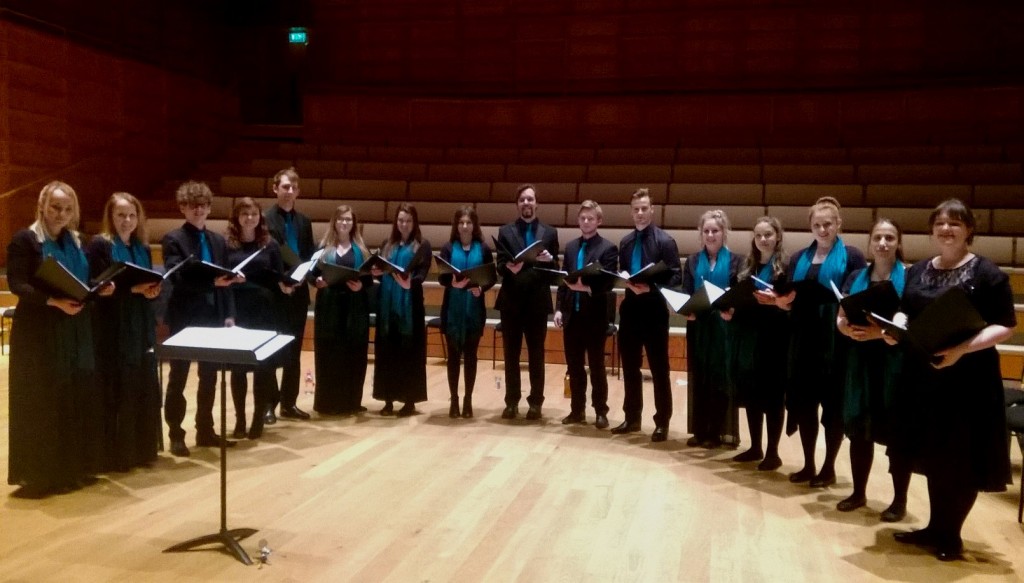
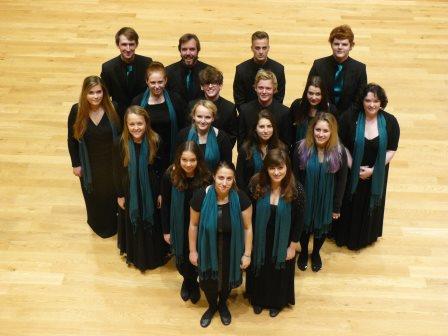 The Chamber Choir, phoenix-like, has risen anew once more – over half the Choir is new this year – and has been busy exploring a range of repertoire for the annual concert in the Cathedral Crypt in March. Before that, though looms the University Carol Service – always a high point in the Choir’s performing calendar – and we’re currently busy learning a fistful of pieces; this year, one of the carols is the radiantly-colourful Hymn to the Virgin written by Edinburgh-based Steven Griffin, which was originally written for the Kings’ Singers and won the Classic FM ‘Carol for Christmas’ competition in 2012. It’s nice to be exploring a different setting to the customary one by Britten, and the work’s purple-hued harmonic language is really starting to blossom as the Choir grows in confidence. This year’s student conductor, fourth-year Emma Murton, is also working on Ravenscroft’s meditative Remember, O Thou Man, for the Big Church in a couple of weeks’ time.
The Chamber Choir, phoenix-like, has risen anew once more – over half the Choir is new this year – and has been busy exploring a range of repertoire for the annual concert in the Cathedral Crypt in March. Before that, though looms the University Carol Service – always a high point in the Choir’s performing calendar – and we’re currently busy learning a fistful of pieces; this year, one of the carols is the radiantly-colourful Hymn to the Virgin written by Edinburgh-based Steven Griffin, which was originally written for the Kings’ Singers and won the Classic FM ‘Carol for Christmas’ competition in 2012. It’s nice to be exploring a different setting to the customary one by Britten, and the work’s purple-hued harmonic language is really starting to blossom as the Choir grows in confidence. This year’s student conductor, fourth-year Emma Murton, is also working on Ravenscroft’s meditative Remember, O Thou Man, for the Big Church in a couple of weeks’ time.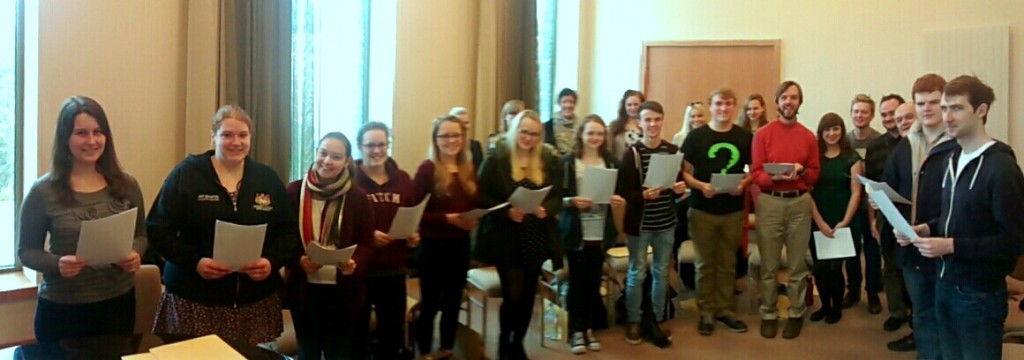 The Cecilian Choir has also burst into life, and is currently rehearsing Monteverdi’s Beatus Vir and Hassler’s Alleluja, two vibrant pieces which explore textural variation within the ensemble to dramatic effect; and the Monteverdi is certainly keeping us on our toes…
The Cecilian Choir has also burst into life, and is currently rehearsing Monteverdi’s Beatus Vir and Hassler’s Alleluja, two vibrant pieces which explore textural variation within the ensemble to dramatic effect; and the Monteverdi is certainly keeping us on our toes…